The Xuan Lac Nature Reserve, located in the Cho Don district,
Bac Kan province, covers over 4,100 hectares at an altitude of around 1,000 meters. This remarkable site encompasses the communes of Dong Lac, Xuan Lac, Ban Thi, and Yen Thinh, offering a cool climate throughout the year, stunning landscapes, and a historical and cultural richness that form the basis of tourism development in the region.
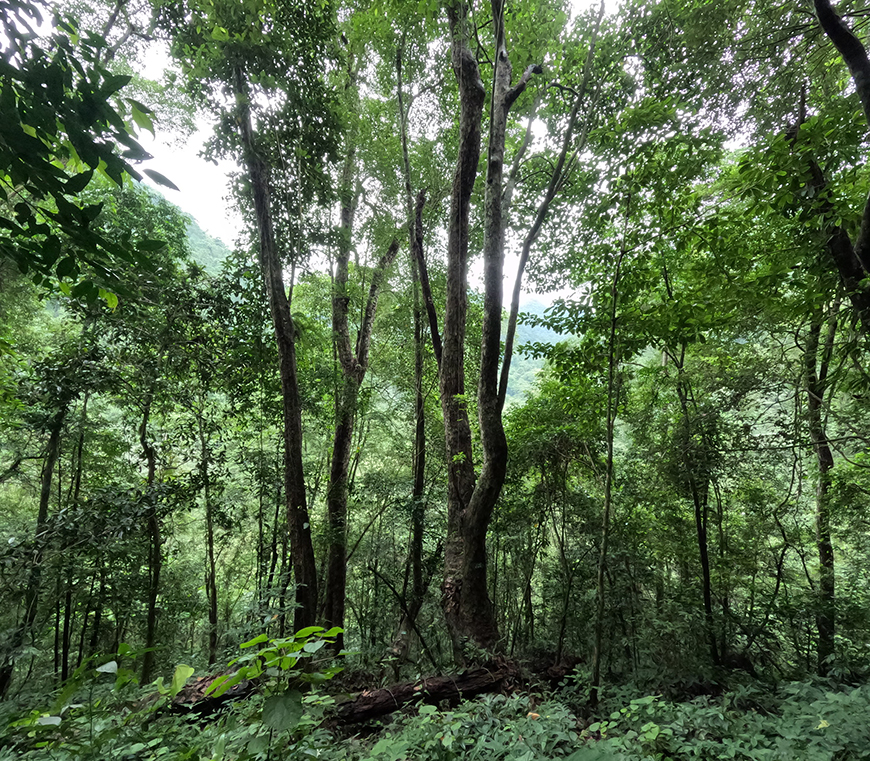
Xuan Lac Nature Reserve - Photo : Mr Linh's Adventures
Presentation of the Reserve
Nam Xuan Lac Reserve, established in 2004, covers approximately 1,788 hectares. It is part of Vietnam's efforts to preserve its rich biodiversity, housing many endangered species and unique ecosystems. According to the Forest Department data, this area contains 653 species of higher plants, including 50 listed in the Vietnam Red Data Book and 9 on the IUCN Red List. Among these species are precious woods such as ironwood and various medicinal herbs.
Fauna and Flora
The reserve is home to a diverse fauna, including 29 species of mammals, 47 bird species, and 12 reptile species. Among the rare species are black monkeys, spotted monkeys, and large lorises. This rich biodiversity is attracting more visitors interested in experiential tourism and conservation.
Historical and Cultural Significance
The Nam Xuan Lac region holds remnants of French colonial mining operations, reflecting a significant historical period. The French, drawn to the cool climate, established holiday resorts whose traces still remain today. Moreover, this site is located on the tourist route connecting the Cho Don security zone to
Ba Be Lake, enhancing the region's appeal.
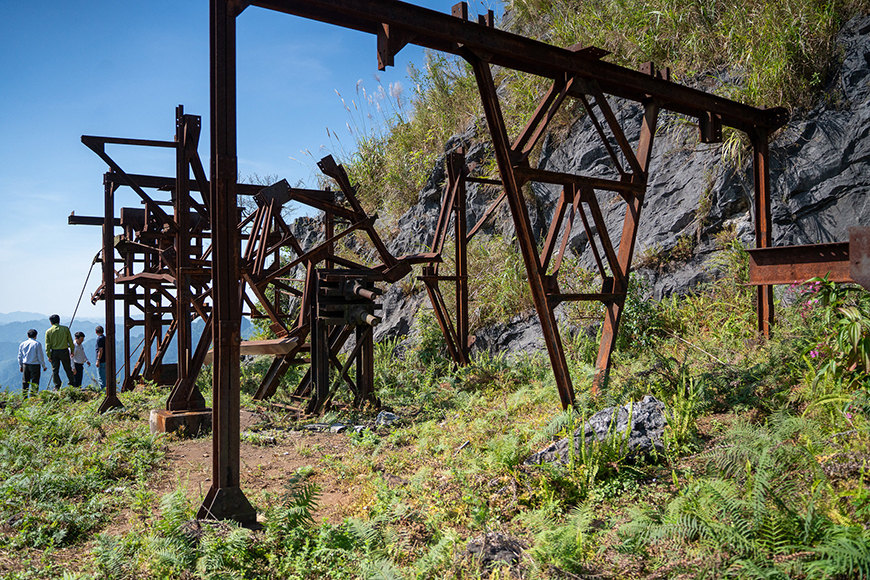
Remnants of ancient mining operations are still visible - Photo : Mr Linh's Adventures
Reserve Characteristics
Biodiversity
The reserve stands out for its diverse flora and fauna, crucial for conservation efforts. It harbors many endemic or endangered species.
Geography
The mountainous landscape and karst formations create essential habitats for wildlife and flora. Dense forests provide vital resources to local communities.
Cultural Importance
Historical remnants, especially from the colonial period, add a cultural dimension to the region's natural beauty. These fascinating traces of the French colonial past, particularly through the remains of old lead and zinc mines, not only testify to the intensive mining that took place in the early 20th century but also highlight the historical and cultural impact of that period on the region.
In fact, the mining history of Bac Kan dates back centuries, long before the arrival of the French colonists. Local populations were already extracting minerals such as coal, copper, and zinc for subsistence and trade. However, it was at the beginning of the 20th century that mining in the region took on a new scale with the arrival of the French. Indeed, as early as 1909, the French colonial government heavily invested in mining the region's mineral resources. Attracted by Bac Kan's underground wealth, the colonists established an extensive network of mines and infrastructure. Thousands of Vietnamese workers were forced to work in difficult and dangerous conditions to extract valuable minerals. The Cho Dien-Ban Thi mine became the largest of its kind in Vietnam, employing, at its peak, around 1,000 workers, supported by a complex network of tunnels, winches, and railways. These infrastructures were crucial for ore transportation, connecting extraction sites to processing locations.
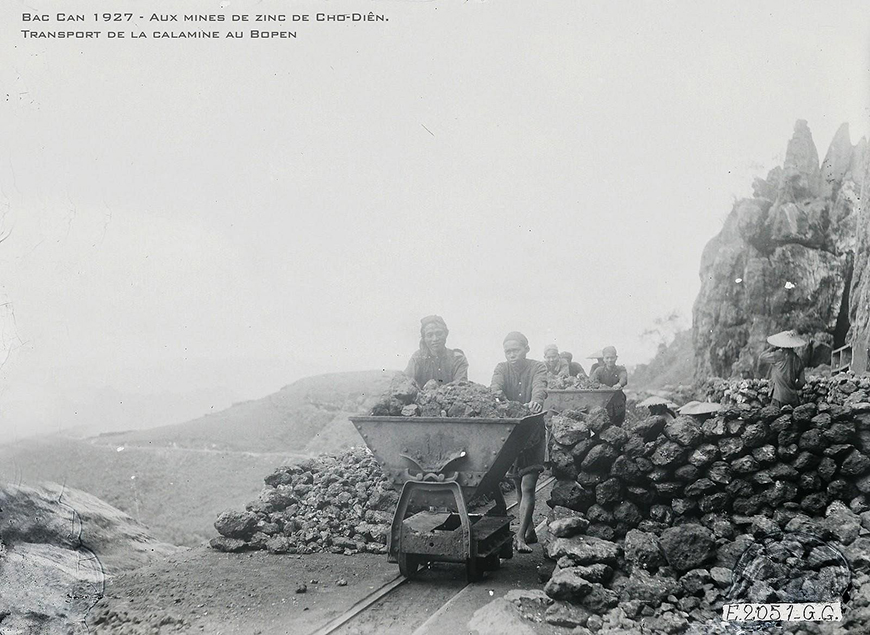
Cho Dien Zinc Mines - Transportation of Scale - Photo : Unknown French Photographer - 1927
Today, remnants of these mining operations are still visible. Visitors can explore tunnels carved into the mountain for ore transportation. These passages, known as "tu nen" in the Tay language – likely a deformation of the French word "tunnel" – are a testament to the ingenuity and techniques of that era. The steel structures, although rusted and weathered, still stand proudly, offering a poignant glimpse into colonial history.
The former winch stations, which once facilitated ore transportation, are now overgrown with vegetation, but their presence continues to evoke the struggles and efforts of the miners. The iron pillars, although partially destroyed, are symbols of the past's resistance against natural forces. These more than century-old remnants remind us of how the Indochina Mining and Metallurgical Company invested in the mine, especially in constructing a cable car system of over 3 km (perhaps the first cable car system in Vietnam) and a railway for ore transport.
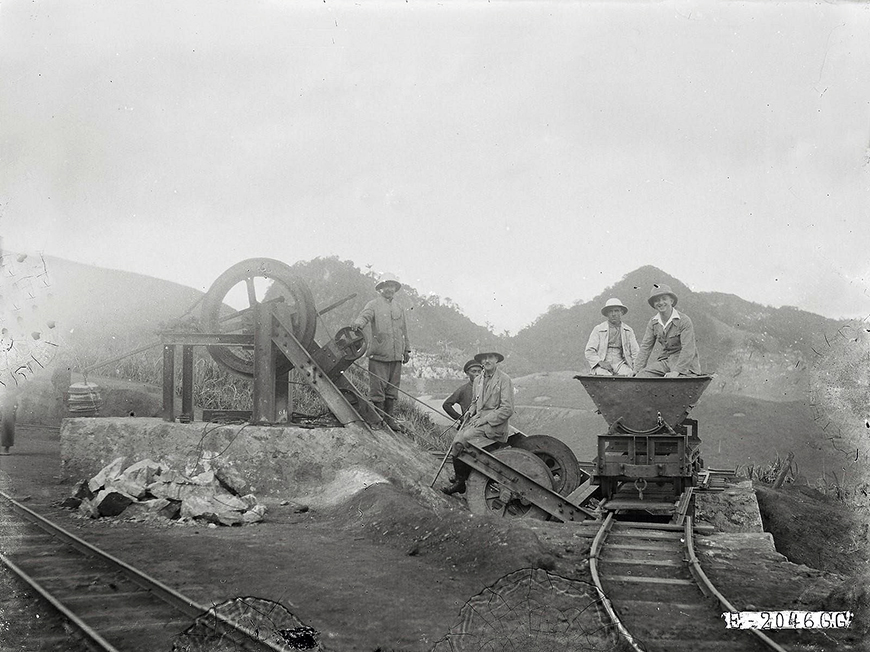
French engineers pose for a photo - Photo : Unknown French Photographer - 1927
These remnants are not just memories of a bygone era; they are also places of remembrance. They recall the hardships endured by Vietnamese workers and underscore the colonial exploitation that marked the region. By visiting these sites, hikers and researchers can better understand the historical impact of mining and its role in Vietnam's social and economic evolution. Did you know? During the war against the French, part of the steel from this cable winch system was used to produce weapons.
Ecotourism and Conservation
The Vietnamese government prioritizes the conservation of areas like Nam Xuan Lac due to the alarming decline in wild animal populations. Collaborations with international organizations aim to enhance conservation strategies and protect the reserve's unique biodiversity. Showcasing these remnants in ecotourism projects provides a unique opportunity to raise public awareness about the importance of preserving cultural and historical heritage. By incorporating these sites into tourist itineraries, the Xuan Lac Nature Reserve hopes to attract visitors eager to explore not only the region's biodiversity but also its rich and complex history.
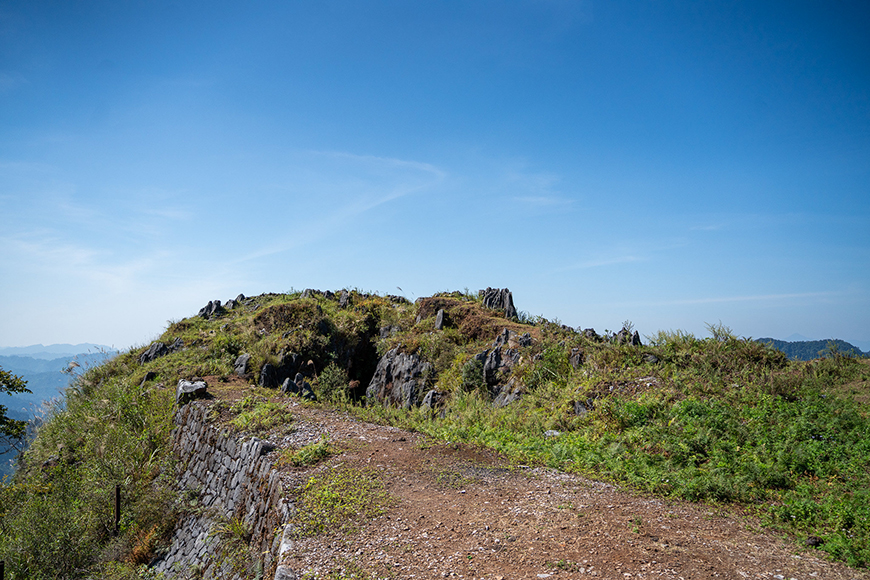
Phja Khao Peak - Photo : Mr Linh's Adventures
Trekking to Phja Khao Peak
Trekking to Phja Khao Peak is an exciting adventure for nature enthusiasts. At an altitude of about 1,541 meters, the summit offers breathtaking views of the surrounding mountains.
Good to know: The ideal period for trekking to Phia Khao Peak is the dry season, typically from late autumn to early spring (October to March). This period offers clearer skies and more stable weather conditions.
Itinerary
The route, though challenging, is rewarding.
From the start, the trail winds through a dense forest where bird songs and rustling leaves create a natural symphony. Each step brings us closer to the majestic mountains on the horizon, offering a superb panorama of wild beauty landscapes.
As we climb the slopes, remnants of the former mining operations reveal themselves, telling the story of a rich and complex past. Ruins of tunnels, covered in moss and ivy, narrate the tale of miners who shaped this land. The rusted iron pillars, remnants of a bygone era, stand proudly, defying the passage of time and prompting reflection.
After hours of effort, the trail opens up to a panoramic view at the summit of Nui Phja Khoa. From there, the lush valleys and mountain ridges unfold as far as the eye can see, creating a natural tableau of striking beauty. A gentle breeze caresses the face, carrying the scent of wildflowers blooming with the seasons. It's a moment of pure magic, where one feels both small and connected to the grandeur of nature. At the summit, you can also find the Phja Khoa Temple. This place of worship, built in 1933, is dedicated to Tran, an iconic figure who defended the Land of the Dragon against Mongol invaders. The temple, restored in 2017, features traditional architecture in a spiritual atmosphere, providing a space for contemplation for visitors who venture this far.
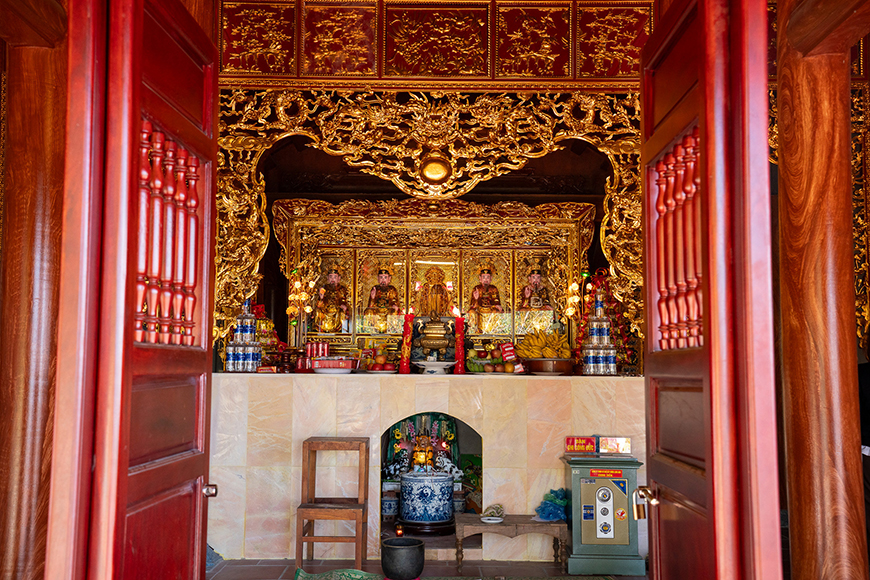
The little temple of Phja Khao - Photo : Mr Linh's Adventures
Much More Than a Trek
This trek, beyond the physical experience, becomes a true immersion in the history and culture of the region. Every step on this memory-laden path evokes past struggles while celebrating the timeless beauty of the Xuan Lac Nature Reserve. It's an adventure that leaves an indelible mark on the hearts of those who engage in it, offering a fresh perspective on the connection between humans, nature, and history.
Trekking to Phja Khao Peak in the Xuan Lac Nature Reserve is not just a physical challenge but also an immersion in Vietnam's natural beauty. Whether you are an experienced trekker or a beginner, this adventure promises unforgettable experiences in the heart of wild and pristine landscapes.
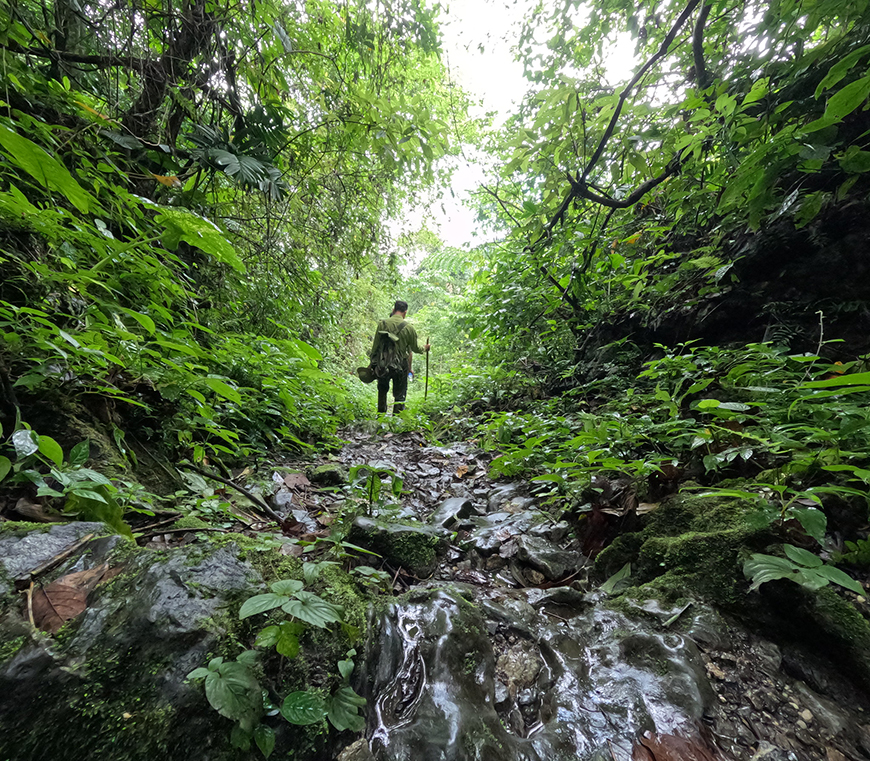
Trekking to Phja Khao Peak - Photo : Mr Linh's Adventures
Note : This collection of rare photos was captured in 1927 by an unknown French photographer, showing the strenuous mining activities at the Cho Dien Mine undertaken by indigenous laborers, at the expense of their health, to enrich the colonial administration. Published
here.